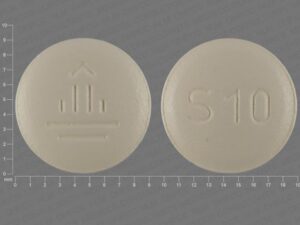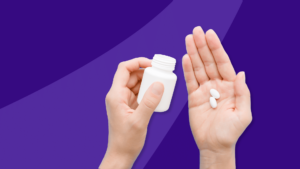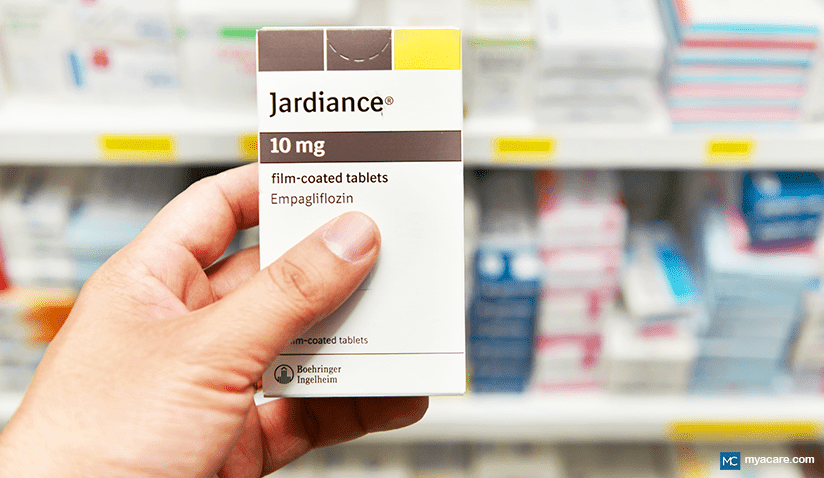Living with diabetes can present daily challenges, from managing blood sugar levels to navigating treatment options. Fortunately, advancements in medicine offer new avenues for effectively managing this condition. Jardiance, a medication approved for the treatment of type 2 diabetes, has emerged as a promising option. In this comprehensive guide, we delve into what Jardiance is, how it works, its benefits, potential side effects, and practical tips for incorporating it into your diabetes management plan.
Contents
What is Jardiance?

Jardiance is a brand name for empagliflozin, which belongs to a class of drugs known as sodium-glucose cotransporter-2 (SGLT2) inhibitors. It is primarily used to manage type 2 diabetes mellitus, a condition characterized by high blood sugar levels. This is due to the body’s inability to use insulin or produce enough of it effectively.
Empagliflozin, the active ingredient in Jardiance, works by inhibiting SGLT2, a protein found in the kidneys. SGLT2 is responsible for reabsorbing glucose back into the bloodstream from the urine. By blocking the action of SGLT2, empagliflozin prevents the kidneys from reabsorbing glucose, leading to increased excretion of glucose through urine and ultimately lowering blood sugar levels.
Jardiance is typically prescribed as an oral medication taken once daily, either alone or in combination with other diabetes medications, such as metformin or insulin. It is not intended for use in individuals with type 1 diabetes or diabetic ketoacidosis.
How Does Jardiance Work?
Jardiance, a medication primarily used in the management of type 2 diabetes, operates through a targeted mechanism to effectively lower blood sugar levels. Here’s a detailed breakdown of how Jardiance works, elaborated in points:
- SGLT2 Inhibition: Jardiance contains empagliflozin, the active ingredient responsible for its therapeutic effects. Empagliflozin acts by inhibiting a protein called sodium-glucose cotransporter-2 (SGLT2) in the kidneys.
- Kidney Function Alteration: Normally, SGLT2 plays a crucial role in reabsorbing glucose from the urine back into the bloodstream. However, when Jardiance is introduced, it disrupts this process by blocking the action of SGLT2.
- Preventing Glucose Reabsorption: By inhibiting SGLT2, Jardiance effectively prevents the kidneys from reabsorbing glucose, leading to a significant change in the handling of glucose in the body.
- Increased Glucose Excretion: With the reabsorption pathway blocked, more glucose remains in the urine rather than being returned to the bloodstream. This results in increased excretion of glucose through urine, effectively removing excess glucose from the body.
- Insulin-Independent Action: Unlike some other diabetes medications that work by directly affecting insulin production or sensitivity, Jardiance exerts its effects independently of insulin. This makes it a valuable treatment option for individuals with type 2 diabetes who may have varying degrees of insulin resistance or insulin production.
Benefits of Jardiance Medicine for Diabetes

Here are some of the benefits of Jardiance medicine for Diabetes:
- Blood Sugar Control: Jardiance, with its unique mechanism of action, effectively lowers blood sugar levels in individuals with type 2 diabetes. By promoting the excretion of glucose through urine, it helps to regulate blood sugar levels and improve glycemic control.
- Cardiovascular Protection: Clinical studies have demonstrated that Jardiance offers cardiovascular benefits beyond its glucose-lowering effects. It can reduce the risk of cardiovascular events. These events are such as heart attack, stroke, and cardiovascular death in people with type 2 diabetes who have established cardiovascular disease.
- Weight Loss: Many individuals with type 2 diabetes struggle with weight management. Jardiance may offer an additional benefit in this regard by promoting weight loss. The increased excretion of glucose through urine leads to a loss of calories, contributing to weight reduction in some individuals.
- Renal Protection: In addition to its cardiovascular benefits, Jardiance has shown potential renal protective effects. Studies have suggested that it may slow the progression of kidney disease and reduce the risk of adverse renal outcomes in individuals with type 2 diabetes and established cardiovascular disease.
- Convenience of Once-Daily Dosage: Jardiance is typically taken orally once daily, making it convenient for individuals to incorporate into their daily routine. This simplified dosing regimen improves medication adherence, which is crucial for achieving optimal diabetes management outcomes.
- Combination Therapy Option: Jardiance can be used alone or in combination with other diabetes medications, such as metformin or insulin, to achieve target blood sugar levels. Its flexible dosing and compatibility with other medications allow healthcare providers to tailor treatment plans to individual patient needs.
- Potential for Long-Term Health Benefits: By effectively managing blood sugar levels and reducing the risk of cardiovascular and renal complications, Jardiance offers the potential for long-term health benefits in individuals with type 2 diabetes. It helps to mitigate the detrimental effects of uncontrolled diabetes on various organ systems. It also improves overall health and quality of life.
Potential Side Effects of Jardiance Medicine for Diabetes
When you take Jardiance, it can cause side effects. Common side effects may include:
- Increase in Urination: One of the most common side effects of Jardiance is increased urination, known as polyuria. This occurs due to the medication’s mechanism of action, which promotes the excretion of glucose through urine. Some individuals may experience more frequent urination as a result.
- Urinary Tract Infections (UTIs): Jardiance may increase the risk of urinary tract infections, particularly in women. Symptoms of UTIs may include painful urination, frequent urination, and lower abdominal discomfort. It’s essential to seek medical attention if you experience any signs of a urinary tract infection while taking Jardiance.
- Genital Yeast Infections: Another common side effect of Jardiance is genital yeast infections, particularly in women. Symptoms may include itching, burning, and abnormal discharge. Maintaining good genital hygiene and seeking prompt medical treatment can help manage and prevent yeast infections.
- Dehydration: Jardiance’s mechanism of action can lead to increased fluid loss through urine, potentially resulting in dehydration, especially in individuals who are elderly or have kidney problems. Symptoms of dehydration may include dry mouth, thirst, dizziness, and fatigue. It’s essential to stay adequately hydrated while taking Jardiance and to seek medical attention if signs of dehydration occur.
- Hypoglycemia: While Jardiance primarily lowers blood sugar levels, it may increase the risk of hypoglycemia (low blood sugar) when used in combination with insulin or other glucose-lowering medications. Symptoms of hypoglycemia may include sweating, shakiness, confusion, and dizziness. It’s crucial to monitor blood sugar levels closely and seek medical attention if hypoglycemia occurs.
- Bone Fracture Risk: Some studies have suggested an increased risk of bone fractures, particularly in elderly individuals, with the long-term use of Jardiance. Healthcare providers need to weigh the benefits and risks of Jardiance therapy, especially in older patients at risk of falls and fractures.
- Ketoacidosis: Although rare, Jardiance may increase the risk of diabetic ketoacidosis (DKA), a serious condition characterized by high levels of ketones in the blood. Symptoms of DKA may include excessive thirst, frequent urination, nausea, vomiting, abdominal pain, and confusion. It’s crucial to seek immediate medical attention if symptoms of DKA occur while taking Jardiance.
Incorporating Jardiance Into Your Diabetes Management Plan

Integrating Jardiance into your diabetes management plan can be a proactive step. It is toward achieving optimal glycemic control and reducing the risk of cardiovascular complications. Here are some of the tips to keep in mind while taking Jardiance:
- Consultation with Healthcare Provider: Before initiating Jardiance or any new medication, it’s crucial to have a thorough discussion with your healthcare provider. Your provider can assess your individual health needs. Also, review your medical history, and discuss the potential benefits and risks of Jardiance. This is in the context of your diabetes management plan.
- Personalized Treatment Plan: Your healthcare provider will work with you to develop a personalized treatment plan. This aligns with your specific health goals and preferences. This may involve starting Jardiance as monotherapy or in combination with other diabetes medications. These are such as metformin or insulin, depending on your unique needs.
- Monitoring Blood Sugar Levels: Regular monitoring of blood sugar levels is essential when incorporating Jardiance into your diabetes management plan. Your healthcare provider may recommend monitoring your blood sugar levels more frequently initially. It is to assess the medication’s effectiveness and adjust your treatment regimen accordingly.
- Hydration: Since Jardiance works by increasing urine output to excrete excess glucose, it’s important to stay adequately hydrated while taking this medication. Aim to drink plenty of fluids throughout the day to prevent dehydration and maintain optimal kidney function.
- Lifestyle Modifications: In addition to medication, lifestyle modifications play a crucial role in managing diabetes effectively. Incorporating healthy habits such as following a balanced diet, engaging in regular physical activity, maintaining a healthy weight, and managing stress can complement the benefits of Jardiance in controlling blood sugar levels and improving overall health.
- Regular Follow-Up Visits: Schedule regular follow-up visits with your healthcare provider to monitor your progress, adjust your treatment plan as needed, and address any concerns or questions you may have about Jardiance or your diabetes management overall. Open communication with your provider is key to achieving successful outcomes.
- Patient Education: Take the time to educate yourself about Jardiance. This includes how it works, its potential side effects, and how to use it properly. Understanding your medication empowers you to take an active role in your diabetes management. Also, make informed decisions about your health.
Conclusion
Jardiance represents a significant advancement in the treatment of type 2 diabetes. It offers not only glucose-lowering effects but also potential cardiovascular benefits. However, like any medication, it’s essential to weigh its benefits against potential side effects. Incorporate it into a comprehensive diabetes management plan tailored to your individual needs. By working closely with your healthcare provider and making healthy lifestyle choices, you can take control of your diabetes and lead a fulfilling life.
Do you want to get rid of diabetes? Join our online diabetes treatment program and reverse Diabetes naturally through lifestyle changes such as a Personalized Diet plan, Exercise, Yoga, dieticians, and health coaches.

